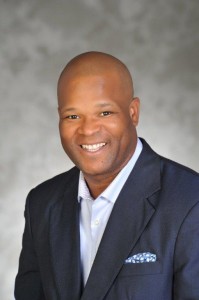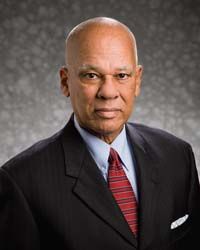I did not get to looking at the 8 day finance reports for the November election – too many candidates, not enough time. But there was no reason I couldn’t take a gander at the 8 day reports for the runoff. Here’s the summary:
Candidate Office Raised Spent Loan On Hand
=====================================================
Burks AL2 27,150 14,933 0 21,563
Robinson AL2 93,720 71,771 0 73,536
Kubosh AL3 60,045 59,221 15,000 13,192
Morales AL3 50,030 31,540 3,300 22,274
Brown Dist A 38,928 29,875 0 30,272
Stardig Dist A 35,909 15,102 0 45,321
Boykins Dist D 81,175 65,667 0 25,974
Provost Dist D 24,600 19,047 18,535 2,258
Garces Dist I 53,355 42,056 0 20,071
Gallegos Dist I 35,196 12,348 1,252 18,518
My comments, with links to the reports, is below.

Andrew Burks – Received $8,000 from Houston Fire Fighters Political Action Fund, $3,500 from Across The Track PAC, $1,000 from HAA Better Government Fund. He also got $375 from CM Bradford’s campaign, $250 from Justice of the Peace Zinetta Burney, and $250 from Jeri Brooks, who was the manager of Mayor Parker’s 2009 campaign and who is now working on behalf of the payday lenders. Burks’ wife Lillie contributed $1,500.
David Robinson – As has been the case all along, Robinson’s finance report reads as if he is the incumbent. He got $8,500 from TREPAC, $5,000 from Houston Council of Engineering Companies, $2,500 from HOME PAC, $2,500 from Houston Associated General Contractors PAC, $2,000 from HOME PAC, $1,500 from Allen Boone Humphries Robinson LLC, $1,000 from LAN PAC, $1,000 from Pipefitters’ Local Union No. 211 COPE Account, $500 from Bracewell & Giuliani Committee, $500 from Cobb Fendley PAC, $500 from HOUCON PAC, $500 from Houstonians For Responsible Growth-PAC, $500 from Amegy Bank of Texas PAC, and $250 each from Associated Builders & Contractors PAC, CDM Smith Inc. PAC Account, Houston Westside PAC, and Huitt Zollars Inc. Texas PAC. He also got $5,000 from Peter Brown, $1,000 from Locke Lord, which is Robert Miller’s firm, and $500 from Marcie Zlotnick, who I believe is CM Ellen Cohen’s daughter.
Michael Kubosh – $47,000 of the amount raised was his own contributions. He got $2,500 from the HPOU PAC, $1,000 from the IEC TX Gulf Coast PAC, $500 from the BOMA PAC, $1,000 from the Baker Botts Amicus Fund, and $1,000 from lobbyist/attorney/blogger Robert Miller, who is also currently working on behalf of the payday lenders.
Roy Morales – $5,000 from Houston Council of Engineering Companies Inc PAC, $1,000 from HVJ PAC, $2,300 from HOME PAC, $250 from Associated Builders & Contractors PAC, and $1,000 from himself. I did not see any contributions from Democratic-aligned PACs or prominent progressives on either his report or Kubosh’s. I’ll be very interested to see what the undervote rate is like in this race.
Helena Brown – $1,000 from IEC Texas Gulf Coast PAC, $500 from BAC-PAC, $250 from Seafarers PAC, $500 from Greater Houston Mobility PAC, $1,000 from Group 1 Automotive, Inc. PAC, $500 each from Linebarger Goggan Blair & Sampson LLP and Locke Lord Bissell & Liddell LLP (Robert Miller’s firm), and $1,000 from TREPAC, which remember is the realtors. She also got $500 from Toni Lawrence’s campaign and $100 from Bruce Tatro, meaning that her predecessors that backed her in 2011 are backing her again after sitting out the regular election cycle. Finally, she too received $250 from Jeri Brooks. I think it’s fair to say the payday lenders are choosing sides in these races.
Brenda Stardig – $10,000 from HPOU PAC, $5,000 from Houston Fire Fighters Political Action Fund, $2,000 from Houston Council of Engineering Companies PAC, $500 from Houston Westside PAC, $500 from Amegy Bank of Texas PAC, $250 from Arcadis G&M, Inc. Texas PAC, $500 from Associated Builders & Contractors of Greater Houston PAC, $250 from CDM Smith, Inc PAC, and $250 from Huitt-Zollars, Inc. Texas PAC. She has about $2,800 listed as expenses for postcards plus $200 from radio ads, but I don’t see much else that looks like voter outreach. Once again I wonder why she’s sitting on so much cash.
Dwight Boykins – Another report that looks like it belongs to an incumbent. Boykins raked in (deep breath) $5,000 from Houston Council of Engineering Companies Inc. – PAC, $5,000 from TREPAC, $2,750 from HOME PAC, $2,000 from BEPC LLC, $1,500 from HOUCONPAC, $2,000 from HAA Better Government Fund, $500 from Fulbright & Jaworski LLP Texas Committee, $500 from Andrews & Kurth Texas PAC, $1,000 from Linebarger Goggan Blair & Sampson, LLP, $250 from Houston Westside PAC, $1,000 from Pipefitters’ Local Union No. 211, $500 from Greenberg Taurig LLP Texas PAC, $250 from Cobb Fendley PAC, $500 from Bracewell & Giuliani Committee, $250 from CDM Smith Inc. PAC Account, $500 from LAN-PAC, $1,000 from Plumbers Local Union No. 68, $500 from Arcadis G & M, Inc. Texas PAC, $500 from Locke Lord (Robert Miller’s firm), $1,500 from Allen Boone Humphries Robinson, $1,000 from I.L.A. Local 26 P.A.C. Fund, $1,000 from Baker Botts Amicus Fund, $250 from Huitt-Zollars, Inc Texas PAC, $1,000 from HVJ Political Action Committee, $1,000 from Southwest Laborers District Council PAC, and $2,500 from HPCP Investments LLC. Whew! He also received $1,000 from CM Stephen Costello, and $500 from Anthony Robinson, who I guess did ultimately endorse in the runoff.
Georgia Provost – $1,000 from Woodpest Inc PAC was her only PAC contribution. She got $4,000 each from Alan and Renee Helfman; Alan Helfman is her campaign treasurer. She also received $1,500 from Peter Brown, and $250 from Anthony Robinson. Maybe Robinson didn’t pick a side in the runoff after all.
Graci Garces – $8,000 from TREPAC, $2,000 from Texas Taxi PAC, $500 from Seafarers PAC, $1,000 from Wolpert Inc PAC, $500 from Linebarger Goggan Blair & Sampson, LLP, $5,000 from Houston Fire Fighters Political Action Fund, $2,000 from HAA Better Government Fund, $2,500 from HPOU PAC, $2,000 from Across The Track PAC, and $2,500 from HOME PAC. She also got $500 from the James Rodriguez campaign – no surprise there – and $250 from One World Strategy, which is Jeri Brooks’ firm. In other business-pending-before-Council news, in addition to the Texas Taxi PAC money, Garces got $2,000 from Roman Martinez, the President of Texas Taxis, $1,000 from his wife Diana Davila Martinez (also Garces’ treasurer), and $1,000 each from Rick Barrett (VP of Texas Taxis), Duane Kamins (owner of Yellow Cab), and Ricky Kamins (owner of Liberty Cab). I’m thinking she might be a No vote on Uber.
Robert Gallegos – $4,539.72 in kind from TOP PAC, $1,500 from Teamsters Local $988, $1,000 from Plumbers Local Union No 68, $500 from LAN-PAC, $500 from Linebarger Goggan Blair & Sampson, LLP, $1,000 from Pipefitters Local 211, $2,500 from HPCP Investments LLC, and $1,500 from Houston Dock and Marine Council PAC Fund. He also received $4,400 from Peter Brown, and $225 in kind from Sen. Sylvia Garcia.
You may be wondering why I highlighted donations from people associated with the payday lenders. Isn’t that supposed to come up for a vote with this Council? Well, maybe and maybe not. And maybe the votes on Council will be according to the contributions, and maybe not. But at least now you know.




























